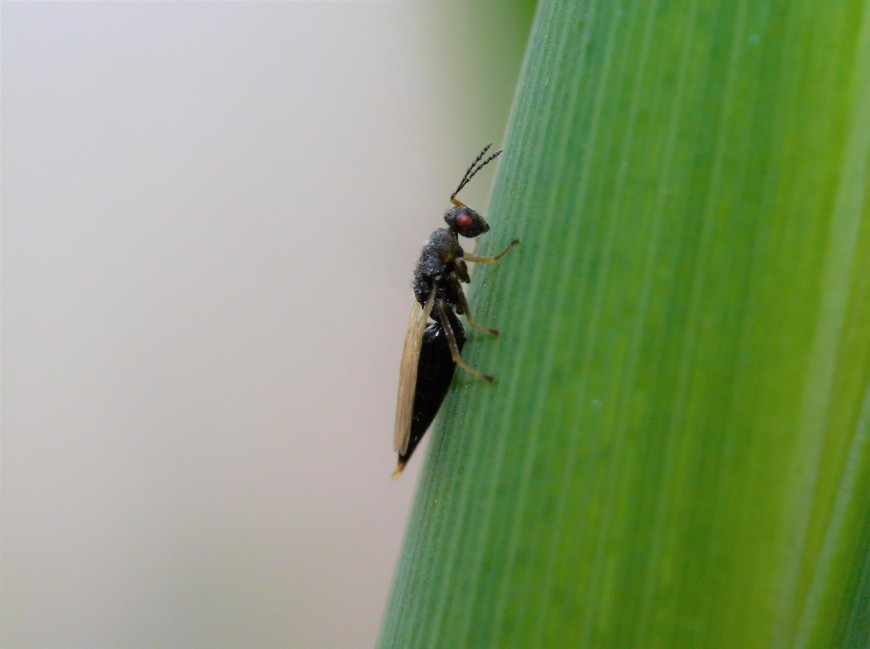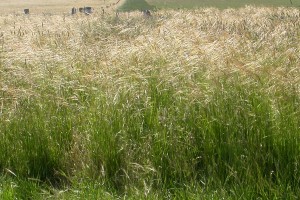Giant reed gall wasp
History in New Zealand
The giant reed gall wasp is native to the Mediterranean region. It was first imported into containment in New Zealand for study in 2015 by Manaaki Whenua - Landcare Research. Permission to release the gall wasps was granted by the EPA in early 2017. The first field release was made in December 2017. Releases of the giant reed gall wasp began in the USA and Mexico in 2009, and this insect is beginning to noticeably reduce the vigour of giant reed there. An armoured scale insect (Rhizaspidiotis donacis) was also approved for release in New Zealand and is expected to complement the activity of the gall wasp.
How would I find/recognise them and what is their lifecycle?
The adults are black and about 5 mm long. Look for them sitting on giant reed plants during the warmer months. The adults are almost always female which produce eggs parthenogenetically (no males required).
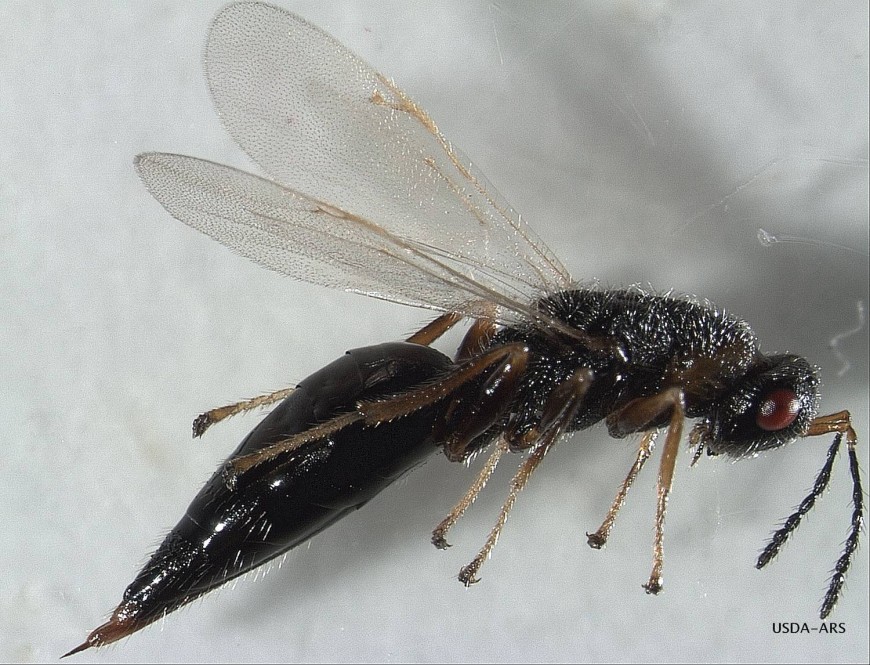
Image: giant reed gall wasp (Tetramesa romana).
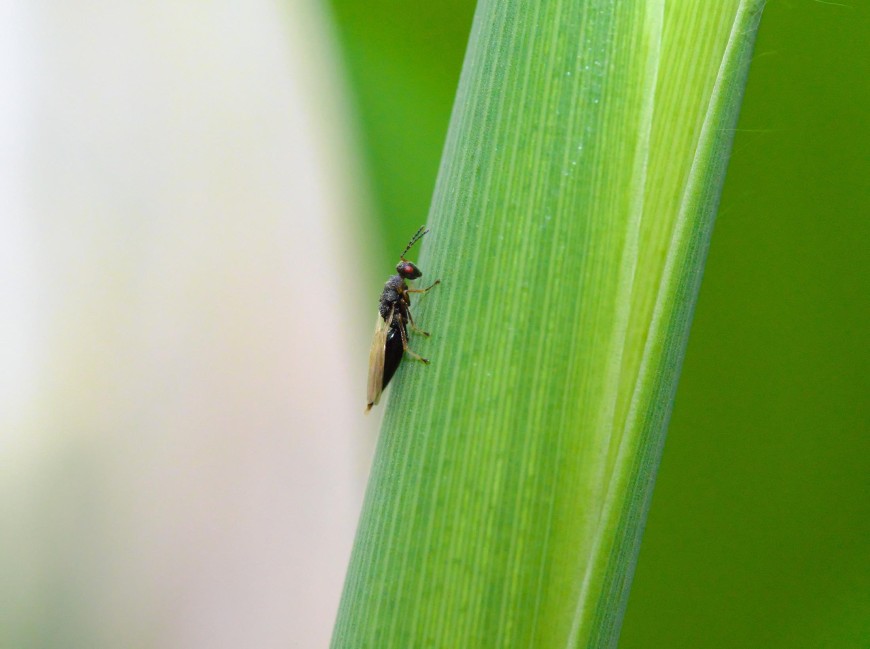
Image: female gall wasp resting on a giant reed shoot.
The eggs are deposited into growing shoots, and each female produces on average 26 eggs in her lifetime. The eggs hatch after 5 days into creamy-coloured larvae which feed inside shoots.
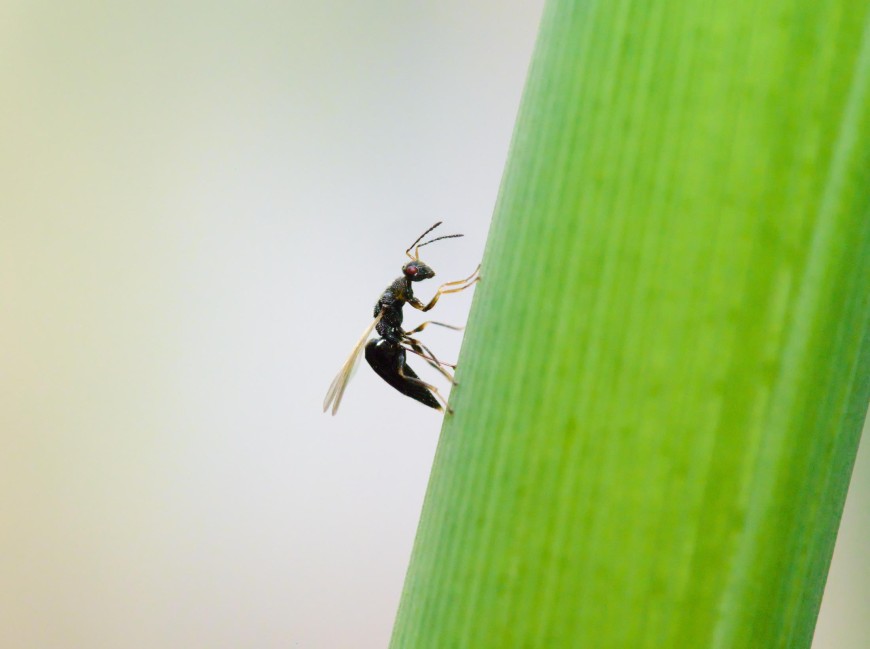
Image: female gall wasp laying eggs in giant reed.
The plant responds to the larval feeding by producing gall tissue, which distends the stem within 2 weeks. These swellings can look like small corn cobs on large vigorous stems, or like broadened deformed shoot tips when side shoots are attacked. The gall wasps can also develop within spindly stems without producing any obvious galls.
Image: galling caused by the giant reed gall wasps and emergence holes made by adult gall wasps after pupation.
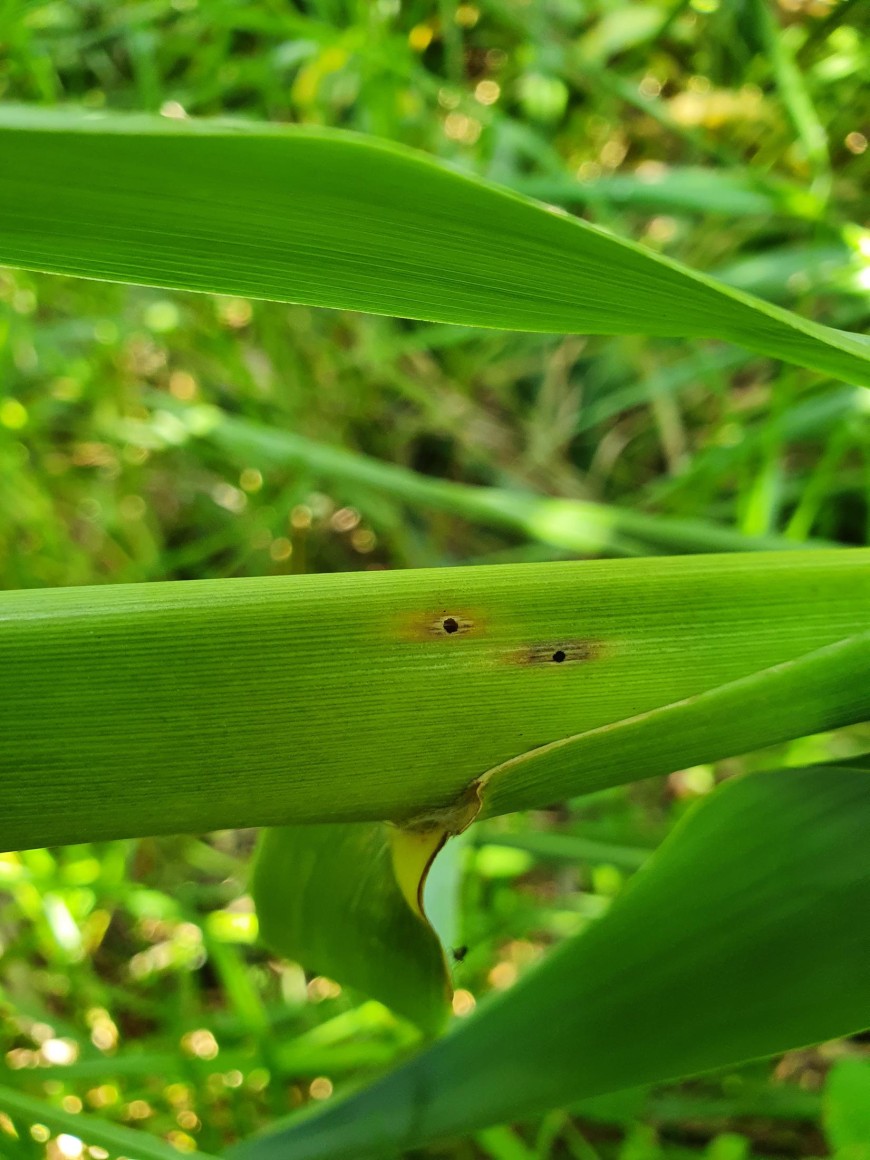
Image: emergence holes indicating gall wasp larvae were present. No galling was formed in this giant reed shoot.
After feeding for 3-4 weeks, the larvae pupate inside galls. New adults emerge after about a week, leaving characteristic emergence holes in the damaged stems. The gall wasp can complete a generation in 40-70 days under variable conditions (15-30˚C), so multiple generations per year can be expected in the field during the warmer months. Old empty galls and exit holes remain quite conspicuous, so it should be possible to detect the presence of the gall wasp all year round.
Image: giant reed gall wasp pupae inside a galled stem.
There are no other insects on giant reed that you are likely to confuse with this gall wasp.
How do they damage giant reed?
The gall wasp forms terminal galls that stop growth and induce the plant to produce fresh side shoots, reducing overall height and depleting rhizome reserves.
Will they attack other plants?
The giant reed gall wasp is highly host specific and is only expected to attack giant reed (Arundo donax) here. No other plants are expected to be at risk.
How effective are they?
It is too soon to know what impact the giant reed gall wasp will have in New Zealand. In Texas, researchers have recorded significant impacts: By 2014 (5 years after release), above-ground biomass had decreased by an average of 22%, with 10% mortality of main shoots and 17% mortality of lateral shoots. Estimated live biomass declined a further 32% between 2014 and 2016 (giving an overall 45% reduction in 7 years). However, more recent research indicates that the gall wasp is less effective in cooler regions of the USA, where the climate is more similar to New Zealand’s climate.
How can I get the most out of this agent?
If the gall wasp establishes at initial release sites, it would be worth helping to establish them in all areas where they are needed. Dispersal rates of 10-25 km per year have been reported in Texas, but dispersal here is likely to be significantly slower since there will be fewer generations per year due to our cooler climate, and because giant reed grows here in relatively isolated patches.
How do I select a release site?
Read Guidelines for selecting release sites for biocontrol agents.
How do I collect them for release at other sites?
When mature galls are present in good numbers, cut them off giant reed plants and tie them on to stems at new sites. Aim to shift up to 50 galls to each new site at any time during mid to late summer, ideally when there are only 1-2 exit holes indicating emergence of new adults is beginning. Sheltered release sites are recommended.
How do I manage the release sites?
Avoid any activities that will interfere with the wasp, such as herbicide application. If you need to undertake control measures, then avoid the release site.
Key contact


